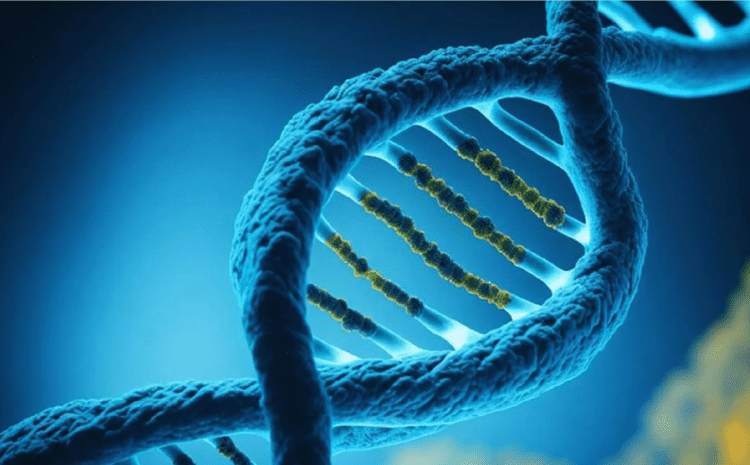
The History and Evolution of Biomarkers
The idea of biomarkers originated in the early days of medicine, when fundamental physiological signs were utilized to evaluate health, such as heart rate and body temperature. The identification of proteins in urine as markers of kidney illness in the 19th century marked the beginning of the process of finding particular biomarkers. Significant progress was made in the 20th century, especially in the fields of genetics and molecular biology, which made it possible to identify increasingly complex biomarkers.
The Role of Biomarkers in Disease Detection and Monitoring
The early identification and tracking of diseases depend heavily on biomarkers. Biomarkers are very useful for screening and determining illness risk prior to a formal diagnosis. For instance, excessive levels of specific proteins may indicate a higher risk of cardiovascular disease and call for early treatment. Biomarkers provide prompt preventative actions by assisting in the identification of people who are highly susceptible to certain illnesses. Additionally, they are employed to monitor the course of illness and the efficacy of treatment, offering a dynamic picture of a patient’s condition and assisting in the formulation of individualized treatment plans.
Biomarkers: A Cornerstone of Modern Medicine
Biomarkers have transformed the treatment of disease in contemporary medicine. These biological markers are essential for tracking the course of a disease since they are generated by sick organs or the body’s reaction to different stimuli. Their utility goes beyond diagnosis; they are helpful in risk assessment and screening even in the absence of symptoms.
What are Biomarkers?
Biological markers, often known as biomarkers, are quantifiable indicators of pathogenic processes, biological processes, or reactions to treatment treatments. They come from the body’s reaction to different situations or from sick tissues like tumors. Biomarkers, which can be found in tissues, blood, or other body fluids, offer vital details about a person’s health or condition.

Types of Biomarkers
Molecular Biomarkers: Among these are genetic and chemical markers. Certain chemicals, such as glucose levels in diabetes, are involved in chemical biomarkers. Genetic biomarkers are materials containing DNA, RNA, or other genetic components that signal the existence or likelihood of hereditary diseases or cancers.
Protein Biomarkers: These are the proteins whose concentrations or functions signify a certain illness. Prostate-specific antigen (PSA) is one example of a protein biomarker that is utilized in prostate cancer screening. Protein biomarkers, which can be detected in tissues, blood, or urine, are essential for both monitoring and diagnosing a variety of illnesses.
Biomarkers in Chronic Disease Management
The field of biomarker research is extremely beneficial for chronic diseases including diabetes and cardiovascular ailments. Biomarkers contribute to improved patient outcomes and quality of life by helping with early detection, tracking the course of disease, and creating individualized therapy regimens. The diagnosis and management of heart failure are guided by measures of cardiac troponin, brain-type natriuretic peptides (BNP), pro-BNP (the N-terminal prohormone of BNP), and natriuretic peptides (NP).
Biomarkers in Neurological Diseases
Biomarkers are essential for both diagnosis and treatment in neurological disorders such as multiple sclerosis, Parkinson’s disease, and Alzheimer’s disease. Imaging markers (such as PET scans) and biomarkers (such as amyloid-beta and tau proteins in cerebrospinal fluid, or CSF) are used to diagnose and track the progression of Alzheimer’s disease. Biomarkers such as alpha-synuclein in CSF help in diagnosis and disease progression monitoring for Parkinson’s disease. Biomarkers for multiple sclerosis, such as CSF oligoclonal bands, aid in diagnosis confirmation and therapy response assessment. These biomarkers offer vital information that facilitates early detection, individualized treatment regimens, and better patient outcomes.
Diverse Applications of Biomarkers
Biomarkers are extremely useful for a wide range of illnesses. Notable cancer biomarkers include carcinoembryonic antigen in stomach and colon cancers, Hp-a in ovarian cancer, procalcitonin in medullary thyroid cancer, serum microRNA-21 in breast cancer, and KRAS mutations in pancreatic cancer. A novel method in oncology is liquid biopsy, which looks for proteins, metabolites, nucleic acids, and extracellular vesicles in urine. Biomarkers such as 4-hydroxy-2,3-nonenal, angiogenin, Cystatin-C, N-acetyl aspartate, and myoinositol are used in neurological illnesses. Despite difficulties in identifying neurological biomarkers, blood biomarkers such as fibrinogen and D-dimer aid in the management of brain damage in COVID-19 patients.

Categories of Biomarkers
Cellular Biomarkers: These markers are made of cells, like blood circulating tumor cells (CTCs). Information on the existence and severity of diseases like cancer can be found by analyzing the traits and behaviors of cells.
Imaging Biomarkers: These biomarkers, which can be found by imaging modalities such as MRI, CT, or PET scans, enable the viewing of internal structures and the evaluation of the course of the disease or the response to therapy. They play a critical role in the diagnosis of cardiovascular illnesses, brain problems, and malignancies.
Future Directions in Biomarker Research
Research on biomarkers has a great deal of promise for novel findings and uses in the future. Technological developments in artificial intelligence, proteomics, and genomics are opening doors to the discovery of new biomarkers. These developments may result in earlier illness identification and more accurate treatment, even for uncommon and complicated ailments. Additionally, researchers are examining customized medicine, in which patient-specific medicines are guided by biomarkers. Furthermore, continuous health monitoring is promised by the integration of biomarkers with wearable health technologies. We can revolutionize global healthcare, enhance patient outcomes, and change disease management by exploring these new opportunities.
Biomarkers for Other Major Diseases
Biomarkers play a crucial role in the diagnosis and treatment of numerous serious illnesses. Biomarkers such as procalcitonin aid in the detection of inflammation and infections in lung disorders. Creatinine and cystatin C levels show renal damage and function in kidney disorders. Biomarkers including ALT, AST, and bilirubin are used to evaluate liver health and disorders. Blood indicators and fecal calprotectin are useful in the detection of inflammatory bowel disorders. Muscle damage is assessed in skeletal muscle illnesses using biomarkers such as creatine kinase. Osteocalcin and bone-specific alkaline phosphatase are two indicators used in bone diseases to track the health and metabolism of bones. These biomarkers include proteomic, metabolomic, and genomic signatures, among many other types of molecular signatures. Biomarkers are now categorized according to how they are used in prognostics, treatments, and diagnostics, which reflects their crucial significance in customized medicine and improved healthcare.
Characteristics of Ideal Biomarkers
Reliability and consistency, patient safety, process management ease, sensitivity and specificity, applicability in diagnosis, staging and prognosis, cost effectiveness, and therapy modifiability are all essential traits of an excellent biomarker.



